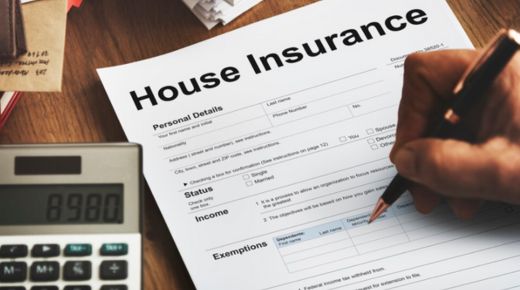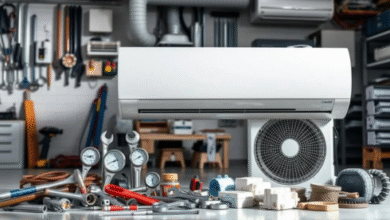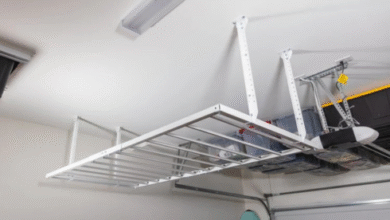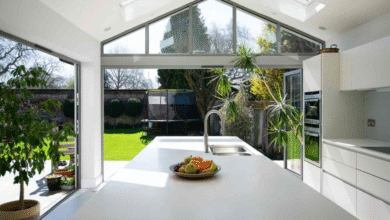Demystifying Homeowner’s Insurance – What Every Homeowner Needs to Know

Homeownership is one of the most significant milestones in life, but with it comes a range of responsibilities—one of the most important being securing the right homeowner’s insurance policy. While often seen as an afterthought or just another expense, homeowner’s insurance is a critical safety net that protects you financially against unforeseen events. Whether you’re a first-time buyer or a seasoned homeowner, understanding the ins and outs of your insurance policy is crucial to safeguarding your investment.
What is Homeowner’s Insurance?
At its core, a home owner’s insurance policy is a contract between you and your insurance provider that offers financial protection in case of damage or loss to your property and belongings. It also provides liability coverage if someone is injured on your property. However, not all policies are created equal, and understanding what your specific plan covers is vital for ensuring you have adequate protection.
The Components of a Homeowner’s Insurance Policy
A typical homeowner’s insurance policy consists of several types of coverage:
- Dwelling Coverage: This covers the structure of your home, including the walls, roof, and foundation, in the event of damage caused by covered perils like fire, windstorms, or vandalism. It is essential to ensure that your dwelling coverage reflects the cost to rebuild your home, not just its market value.
- Personal Property Coverage: This part of your policy protects your personal belongings, such as furniture, electronics, and clothing, if they are damaged or stolen. Many policies will cover these items even if they are lost or damaged while outside the home, but be sure to check the limits and exclusions.
- Liability Protection: If someone is injured on your property or if you accidentally cause damage to someone else’s property, your homeowner’s insurance provides liability coverage. This includes legal fees and medical expenses, potentially saving you thousands of dollars.
- Additional Living Expenses (ALE): If your home becomes uninhabitable due to a covered event, this portion of your policy will cover the cost of temporary accommodations and related expenses until your home is repaired.
Commonly Covered Perils
A homeowner’s insurance policy typically covers damage from common perils such as fire, lightning, windstorms, hail, theft, and vandalism. However, it’s important to understand that not all natural disasters are included. For example, floods and earthquakes are generally excluded from standard policies, but separate coverage can often be purchased if you live in an area prone to these risks.
Understanding Exclusions and Limits
While homeowner’s insurance provides broad protection, there are exclusions and limits to every policy. For instance, high-value items like jewelry, fine art, or collectibles may only be covered up to a specific dollar amount unless you purchase additional coverage. Additionally, some policies exclude damage caused by poor maintenance, wear and tear, or neglect. Reviewing your policy carefully ensures that you understand what is and isn’t covered.
Factors Affecting Your Premium
Several factors can influence the cost of your homeowner’s insurance premium. These include:
- Location: If you live in an area prone to natural disasters like hurricanes or wildfires, your premiums may be higher.
- Home Value and Age: The size, value, and age of your home can affect your premiums. Older homes may cost more to insure because they may require more expensive repairs.
- Security Features: Homes equipped with security systems, smoke detectors, and fire alarms may qualify for discounts on insurance premiums.
- Deductibles: A higher deductible (the amount you pay out of pocket before insurance kicks in) can lower your premiums, but it also means more financial responsibility if you file a claim.
How to Choose the Right Policy
When shopping for a homeowner’s insurance policy, it’s essential to compare coverage options and get quotes from multiple providers. Be sure to:
- Assess how much dwelling and personal property coverage you need.
- Consider whether you need additional coverage for perils like floods or earthquakes.
- Look at the liability limits and determine if you need more protection, especially if you own a high-risk property like a pool or trampoline.
It’s also a good idea to periodically review your policy, especially after making significant home improvements or purchasing valuable items. As your home and life circumstances change, so too should your insurance coverage.
Filing a Claim
If disaster strikes and you need to file a claim, it’s essential to act quickly. Start by documenting the damage with photos or videos, then notify your insurance provider. The claims process can take time, so keeping detailed records of your correspondence with the insurer and any repair estimates can help speed up the resolution.
Conclusion
A homeowner’s insurance policy is more than just a legal requirement—it’s a crucial tool in protecting your most significant investment. Understanding the various components of your policy, what it covers, and how it works can help you make informed decisions about your coverage. By choosing the right policy for your needs, you can enjoy the peace of mind that comes with knowing your home is protected against life’s unexpected events.




